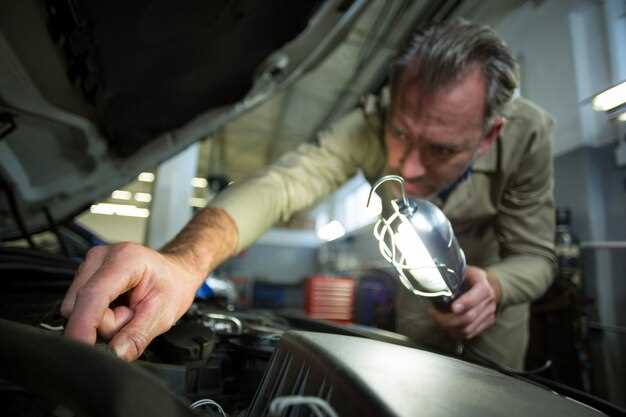
BMW vehicles are renowned for their engineering excellence, yet like any sophisticated machine, they can experience electrical issues over time. These problems often stem from complicated wiring systems that power essential components such as lights, windows, and the engine management system. Understanding common electrical concerns is crucial for any BMW owner.
Among the most frequent issues faced by BMW drivers are malfunctioning lights, dead batteries, and erratic instrument cluster readings. Each of these problems can often be traced back to faulty wiring or damaged components. Identifying the root cause quickly can save time and prevent further complications down the road.
This article aims to provide practical solutions for troubleshooting and resolving common electrical problems in BMW vehicles. By focusing on symptoms, diagnostic steps, and repair tips, we will guide you through the process of restoring your BMW’s electrical system to its optimal condition. Whether you are a seasoned mechanic or a DIY enthusiast, our insights will help you tackle these issues with confidence.
Troubleshooting BMW Wiring Issues for Optimal Performance

Identifying and resolving BMW wiring issues is crucial for maintaining optimal electrical performance. Common symptoms of wiring problems include intermittent electrical failures, malfunctioning components, or warning lights on the dashboard. Begin troubleshooting by visually inspecting the wiring harness for signs of wear, fraying, or corrosion. Damaged wires can lead to short circuits or open circuits, resulting in electrical failures.
Next, use a multimeter to test the continuity of the wiring. This involves checking that electrical current flows uninterrupted through the wire. If you find sections with no continuity, you will need to repair or replace the affected wiring strands. Pay particular attention to connections and terminals, as loose or corroded connections often cause electrical problems.
Additionally, ensure that all ground connections are secure and free of rust or dirt. Poor grounding can result in erratic electrical performance, affecting systems like lighting, sensors, and electronic control units. Cleaning and tightening ground connections can significantly enhance overall performance.
Lastly, consider utilizing a wiring diagram specific to your BMW model. This resource can guide you in understanding the electrical system layout and help you pinpoint potential issues. Regular maintenance and periodic inspections of the wiring system can prevent many common problems, ensuring that your BMW continues to operate smoothly and efficiently.
Diagnosing and Fixing Common Electrical Faults in BMW Models

Diagnosing electrical faults in BMW models requires a systematic approach to identify issues related to wiring and electrical components. Start by performing a visual inspection of the wiring harness for any signs of wear, fraying, or corrosion. Connectors should be checked to ensure they are secure and free of debris that could impede connections.
Next, use a multimeter to test voltage levels at key electrical components such as the battery, alternator, and fuses. Monitoring voltage drop can help pinpoint problems in the wiring that may lead to insufficient power supply. Confirm that ground connections are clean and tight, as poor grounding can lead to a variety of electrical issues.
If specific features are malfunctioning, such as lights or power windows, refer to the vehicle’s wiring diagram to trace circuits and identify the exact location of faults. For complex systems, such as the iDrive or electronic control units, a diagnostic scanner can read fault codes that will guide you in addressing the specific electrical failure.
In some cases, replacing faulty wiring or connectors may be necessary. Ensure that any replacement parts match OEM specifications for optimal performance. After repairs are made, it is crucial to conduct thorough testing of the electrical systems to ensure the issues have been resolved and functionality is restored.
Maintenance Tips to Prevent Electrical Problems in BMW Vehicles
Regular maintenance is essential for preserving the electrical system in your BMW. By implementing preventative measures, you can significantly reduce the likelihood of electrical problems. Here are some key tips to maintain the electrical integrity of your vehicle:
- Check the Battery: Ensure the battery terminals are clean and free of corrosion. Test the battery regularly and replace it if it shows signs of weakness.
- Inspect Wiring and Connectors: Regularly examine wiring for any signs of wear, fraying, or damage. Ensure all connectors are secure and free of dirt or moisture.
- Review Fuses: Periodically check the fuses for any blown or faulty units. Replace them with the correct amperage to prevent electrical issues.
- Monitor Electrical Components: Pay attention to components such as lights, power windows, and infotainment systems. Address any malfunctions promptly to avoid further complications.
- Avoid Short Trips: Short trips can prevent the battery from fully charging. Try to combine errands or take longer drives to keep the battery healthy.
- Use Quality Parts: When repairs are necessary, opt for high-quality replacement parts. Cheap or substandard components can lead to further electrical problems.
- Keep Moisture at Bay: Protect the electrical system from moisture by checking seals and gaskets. Ensure that water does not enter electrical components or wiring.
By following these maintenance tips, you can help ensure the reliability and longevity of your BMW’s electrical system. Preventative care is key to avoiding future electrical problems.
